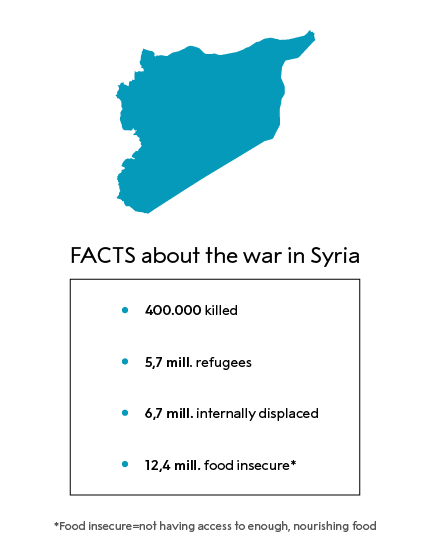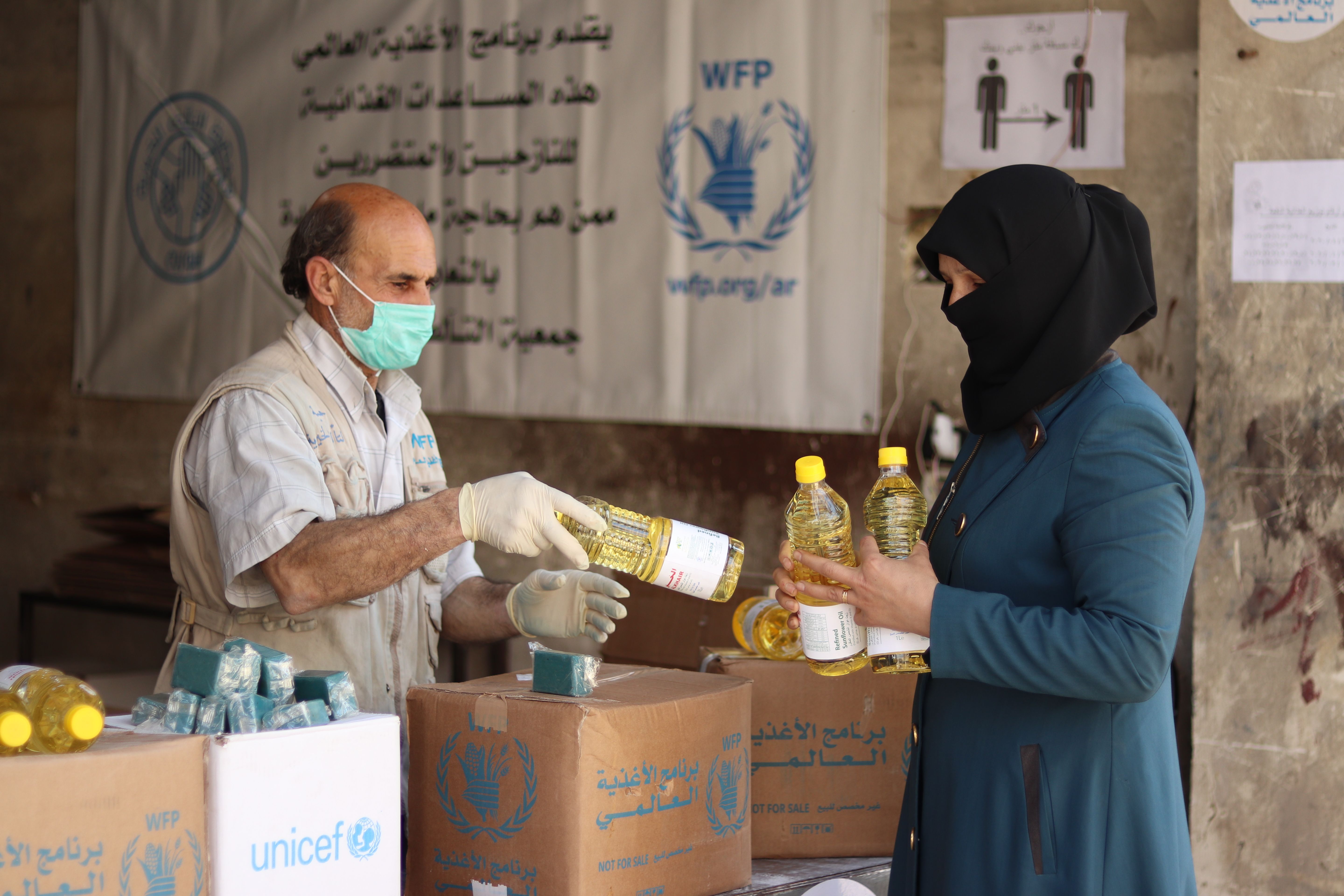Syria: A Decade of Decay
The war in Syria broke out in March 2011, and has been going on for a decade. Today, all parties to the conflict stand accused of violating human rights. A new UN report details how civilians have suffered at the hands of various political entities through the conflict. The Syrian authorities are accused of atrocities against their own population: widespread use of chemical weapons, arbitrary bombings causing civilian suffering, and entire cities laid to waste. Many reports from the past decade have also pointed out how the government and other parties have actively used food and siege warfare as a tactic in a war of attrition against perceived “hostile” civilians.
More than 5 million Syrian have fled their homeland because of the war. Most of these have fled to the neighbouring countries Turkey and Lebanon. Within Syria’s borders, an estimated 6,7 million people are displaced. For many Syrians, the humanitarian situation is still dire. 12,4 million people experience food insecurity, and 80 per cent of the population live below the poverty line.
The bombing of Aleppo in 2019, in combination with the COVID-19-crisis, has made another million people displaced, and millions out of work. Food prices soaring to record levels make the situation even worse.
From uprising to civil war
The conflict in Syria began as a popular uprising, but quickly evolved into an armed conflict. The uprising began as a protest against the authoritarian regime of dictator Bashar al-Assad during the Arab Spring of 2011. The following months, political, religious and ethnic lines crystallized, and a new, highly fractured political landscape emerged. Local and regional players, such as the Hezbollah and the Islamic State, as well as international players such as Russia and the United States, scrambled for power in a country where the Assad regime was rapidly losing control.
Food as a catalyst for war
After the World Food Program was awarded the Nobel Peace Prize for 2020, the Nobel Committee emphasized the vicious cycle of hunger and conflict: “war and conflict can cause food insecurity and hunger, just as hunger and food insecurity can cause latent conflicts to flare up and trigger the use of violence. And while researchers disagree on whether hunger itself causes war, there is little doubt that areas more vulnerable in terms of food, are also those most prone to conflict. According to the UN Convention to Combat Desertification, 80 per cent of major armed conflicts take place in areas vulnerable to drought and poor crop yields.
In Syria, instability in the food markets and systems are considered an underlying cause of the war. Increased food prices stemming from multi-year droughts and commodity speculation contributed to the dissatisfaction with the Assad regime. Extreme droughts, in addition to failed agricultural and water policy, led to failed harvests in the period 2007-2010. The crop failures forced some 1,5 million people to move from rural areas to urban centres, which worsened social unrest and poverty in the country.
Syria is an example of how a local food crisis can have far-reachig consequences for an entire nation, and what sort of repercussions this can have beyond its borders. The war and the battles that followed in Syria was one of the main drivers behind the refugee crisis in 2015, which had a heavy impact on the wider Middle East, as well as Europe.
Food as a weapon
Since war broke out, both the Assad regime and other actors have deliberately used starvation as a weapon, and laid siege to major cities, resulting in hunger and sometimes local famine. Siege warfare has been an important tactical method for the government, used against what they have perceived as hostile cities. In a siege, a city is surrounded, and access to basic goods such as medicine, food and electricity is often cut off. Withholding or blocking humanitarian aid has also been used to wage a war of attrition against opponents, to ensure that the opponent does not become a political threat.
There have been many examples of how aid organisations have been blocked from entering certain parts of the country. For areas dependent on aid, this can be devastating, as food and other goods are often prohibitively expensive. In some cases, emergency aid has been confiscated and redirected to government forces. Throughout the conflict, local food stocks and agricultural lands have been torched or in other ways destroyed by various waring parties, limiting the local food supply.
The WFPs effort in Syria
The humanitarian crisis was exacerbated after the Aleppo bombing in 2016, and worsened further during the COVID-19 crisis. This has caused the WFP to increase its effort in the country, especially in the areas surrounding Aleppo.
The goal of the WFP is to provide essential meals to all displaced people, and provide nutrition to school children. Over a million people receive emergency rations through the WFPs transnational operation via Turkey. In the past year, the number of people suffering from food insecurity has increased. Since 2019, 4.5 more people have entered food insecurity.
The WFP not only provides the food, but are also responsible for the distribution of the food. In many conflicts, failing transport networks are the problem, not a shortage of food. For this reason, infrastructure and maintenance of communication lines are a core part of the WFP operation in Syria. Each month, the WFP provides food to 4,8 million Syrians, making sure that the basic needs of the most vulnerable are met.
Listen to history
Syria in the Nobel Peace Prize Exhibition 2020
The Nobel Peace Prize Exhibition 2020 explores the work of Nobel Peace Prize laureate 2020, The World Food Programme, and how food is used as a weapon of war. Artist Aïda Muluneh has created a photo series with ten images, illustrating ten countries an conflicts where food has been used as a means of power. Syria is one of them.
The photo is titled “The Silence of Hope” and shows two women sitting at a table. It is shot in an abonded hotel in Côte d’Ivoire, where Aïda Muluneh lives and works. In creating the scene, the artist was inspired by a photo of a Syrian girl selling bread in midst of rubble.
“I am trying to show how war and food is related and what trauma the humans living with war are going through”, she says.
The exhibition is supported by Yara International (Nobel Peace Prize Celebration Partner 2020), Canon (print partner) and Bergesenstiftelsen.
Share:



